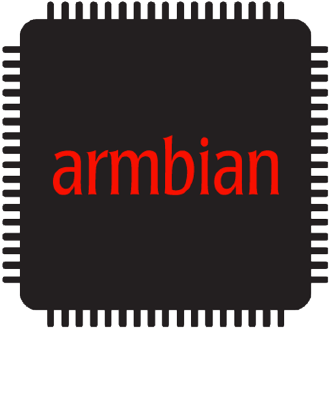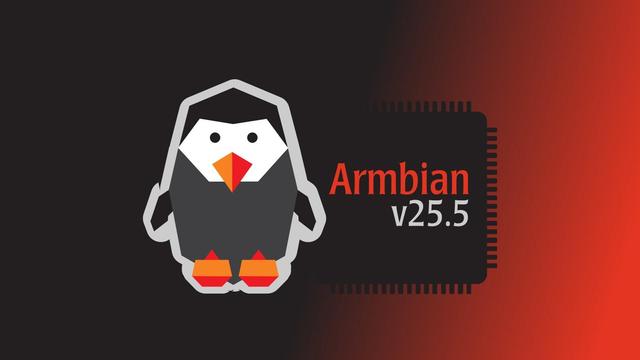#Linux Weekly Roundup for June 1st, 2025: #GNU Linux-libre 6.15 kernel, #AlpineLinux 3.22, #Firefox 139, #Armbian 25.5, #AlmaLinux OS 10, KaOS 2025.05, #Thunderbird 139, #ArchLinux installer adding support for Btrfs snapshots, #TUXEDO Stellaris 16 Gen7 laptop, PanVK now #Vulkan 1.2 conformant, #GStreamer 1.26.2, #PorteuX 2.1, CachyOS ISO snapshot for May 2025, and more https://9to5linux.com/9to5linux-weekly-roundup-june-1st-2025
Armbian v25.5 läuft auf weiteren Geräten - LinuxCommunity

Armbian v25.5 läuft auf weiteren Geräten - LinuxCommunity
Die Distribution Armbian bringt ein leichtgewichtiges Debian vor allem auf ARM- und RISC-V-Systeme. Die neue Version erweitert die Hardwareunterstützung, justiert beim Startvorgang nach und erweitert die Fähigkeiten des Konfigurationswerkzeugs „armbian-config“. Armbian v25.5 läuft jetzt auch auf dem TI SK-AM69, dem BeagleBone AI-64, dem BeaglePlay, und dem PocketBeagle2. Die Unterstützung für den Banana Pi M2+ hat das Team zudem verbessert. Besitzer von Rockchip-Geräten wie dem Rock 5B und insbesondere dem Youyeetoo R1 dürfen sich über eine bessere Audio-Ausgabe freuen, die jetzt auch via HDMI erfolgt. Rockchip64-Geräte treibt der Linux-Kernel 6.14 an, der wiederum für eine bessere Performance sorgen und die Peripherie-Geräte besser unterstützen soll. Apropos Kernel: Entwickler können ab sofort das Patchen des Kernels unterbinden und so bei Bedarf einen originalen Kernel verwenden. Den Bootvorgang sollen zwei Maßnahmen flexibler machen: Zunächst lässt sich die EFI-Partition auch an 4K-Blöcken ausrichten. Damit startet Armbian endlich auch von Qualcomm UFS-Geräten, die eine solche 4K-Ausrichtung verwenden. Darüber hinaus unterstützt Armbian Btrfs-Subvolumes. Die nachträgliche Konfiguration eines Armbian-Images erlaubt das Werkzeug „armbian-config“, das die Entwickler noch einmal aufgebohrt haben: Ab sofort zündet das Tool auf Wusch einige populäre Anwendungen, darunter Home Assistant, Grafana und Immich. Jede Anwendung verfrachtet „armbian-config“ dabei automatisch in eigene, isolierte Docker-Container. Des Weiteren erkennt „armbian-config“ die vorhandenen WLANs besser. Die Logik für Geräte-spezifische Overlays lädt das Tool zudem dynamisch. Damit stehen Einstellungen nur dann zur Verfügung, wenn sie das Gerät tatsächlich auch unterstützt. Abschließend haben die Entwickler Fehler in den Boot-Skripten behoben, die Unterstützung für serielle Konsolen erweitert und ein vereinfachtes Logging-Framework eingeführt.
Armbian 25.5 introduces Linux 6.14 support and better tooling and debuts modular app installs via an improved armbian-config.
https://linuxiac.com/armbian-25-5-released-with-expanded-hardware-support/
#Armbian 25.5 Released with Support for Banana Pi M2+, BeagleBone AI-64, BeaglePlay, TI SK-AM69, Radxa Cubie A5E, #Qualcomm Robotics RB5, and Other SBCs https://9to5linux.com/armbian-25-5-released-with-support-for-banana-pi-m2-and-beaglebone-ai-64-sbcs
I don;t know why that's the way to install #kicad on my #armbian (a #debian-based distro of #linux First, I install KiCad, then I find that I need kicad-symbols and kicad-foorprints.
Now, guess what? It does not work yet because KiCad is of version 7 while the KiCad Symbols and KiCad Footprints are of version 9.
So, I downgrade them.
To downgrade, I run:
apt list -a kicad-symobols
And then install with
sudo apt install kicad-symbols=<version>
Then, better delete your
~/.config/kicad/7.0
and configure your project anew.
https://www.armbian.com/newsflash/armbian-updates-nas-support-lands-boot-systems-improve-and-rockchip-optimizations-arrive/ #ARM #HackerNews #ngated

Armbian Updates: OMV support, boot improvents, Rockchip optimizations - Armbian
This week, the Armbian development team pushed several noteworthy enhancements, with improvements spanning user experience, bootloader upgrades, and broader system support. Notably, this week saw the debut of OpenMediaVault in Armbian’s software installer, a move that brings plug-and-play NAS functionality to supported boards. OpenMediaVault is a feature-rich platform that enables users to turn single-board computers
Armbian Updates: OMV support, boot improvents, Rockchip optimizations
#HackerNews #Armbian #Updates #OMV #Support #Boot #Improvements #Rockchip #Optimizations

Armbian Updates: OMV support, boot improvents, Rockchip optimizations - Armbian
This week, the Armbian development team pushed several noteworthy enhancements, with improvements spanning user experience, bootloader upgrades, and broader system support. Notably, this week saw the debut of OpenMediaVault in Armbian’s software installer, a move that brings plug-and-play NAS functionality to supported boards. OpenMediaVault is a feature-rich platform that enables users to turn single-board computers


